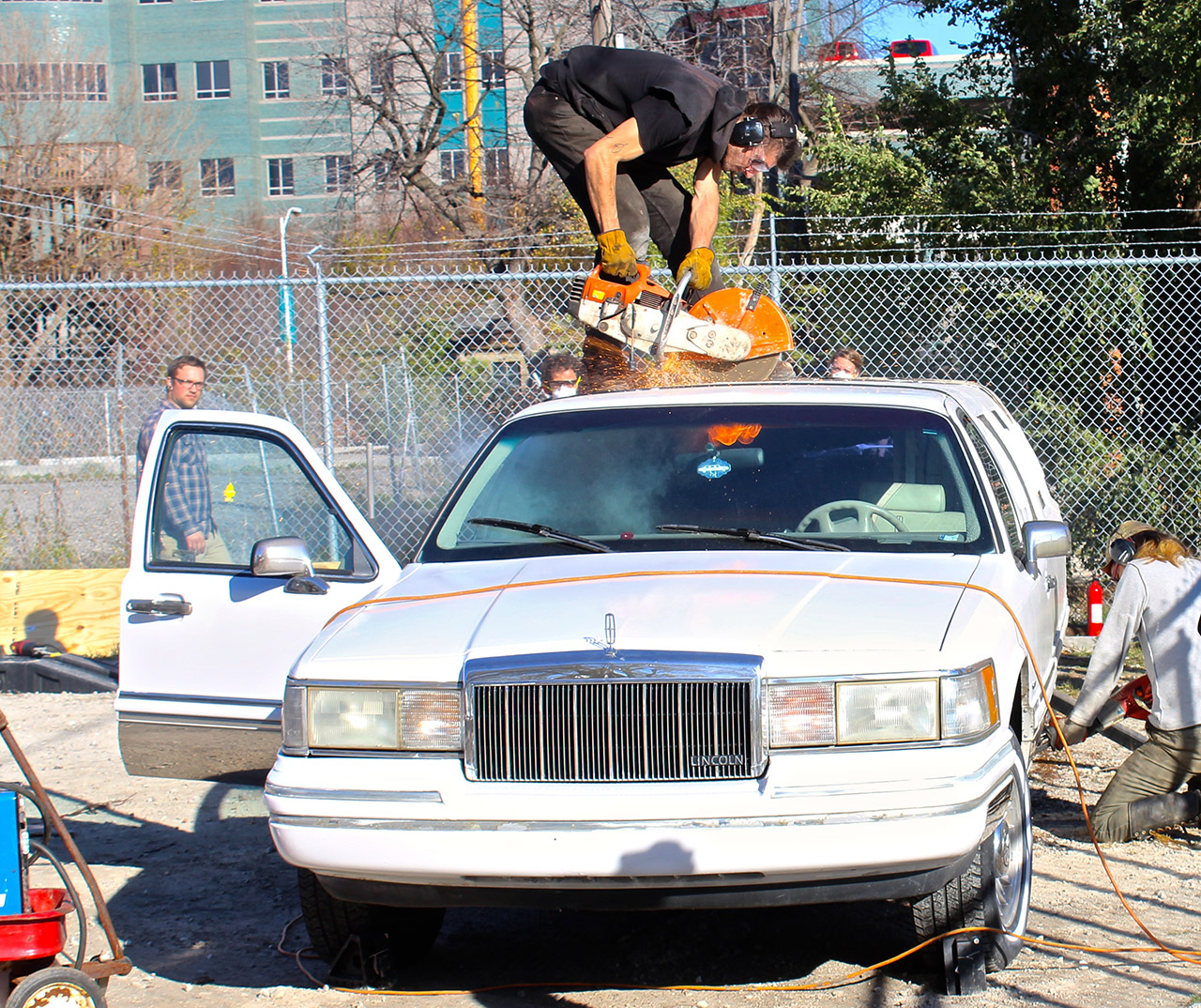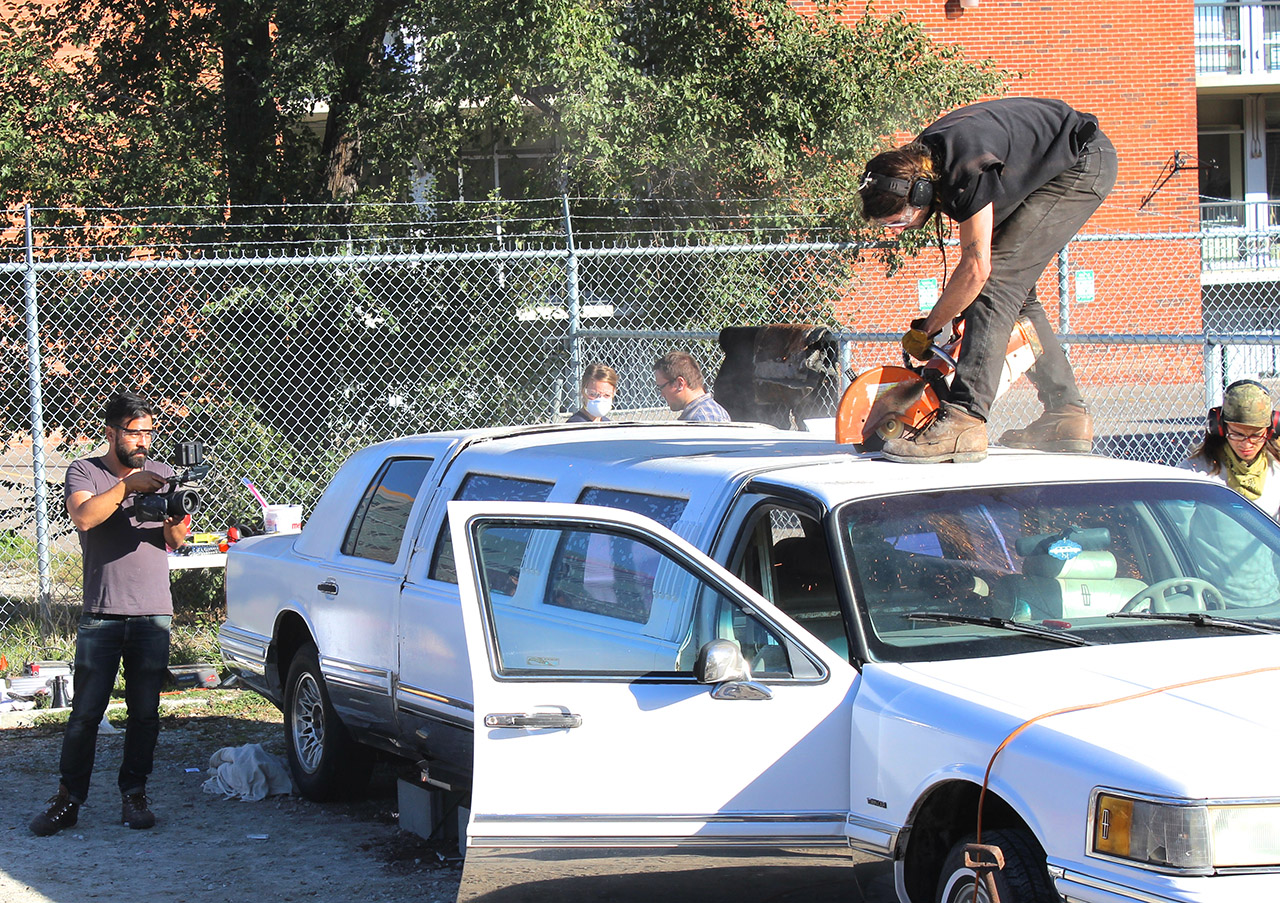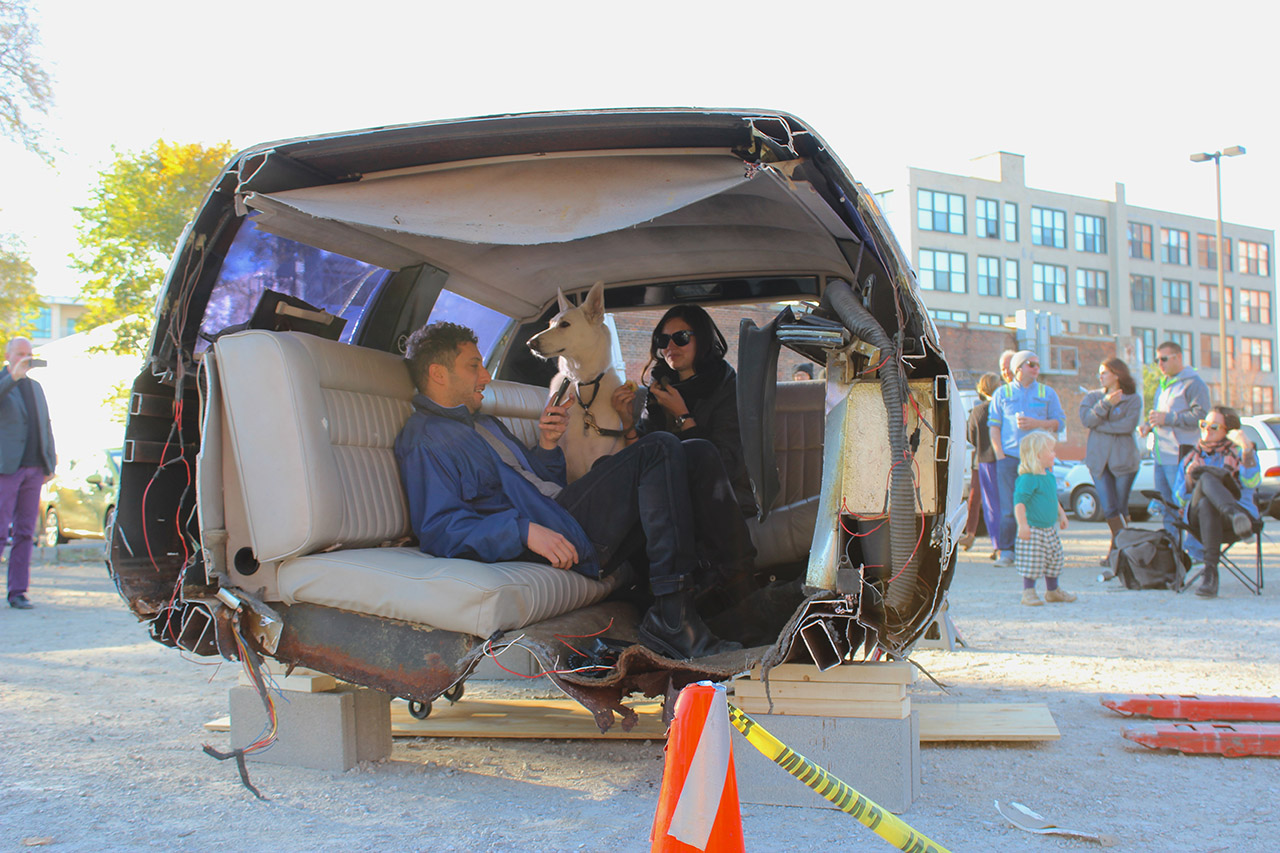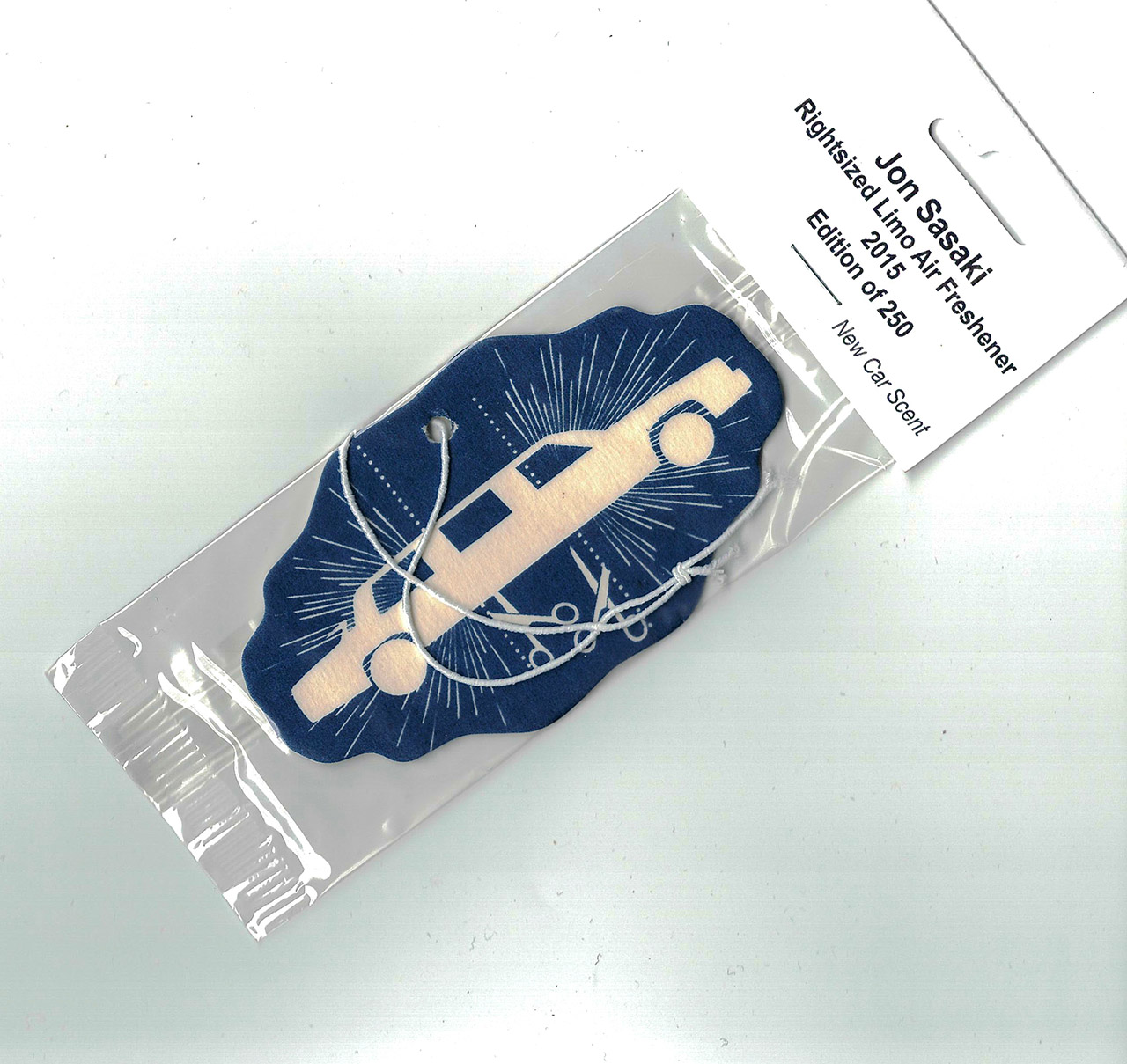
‘All-New 2015 Rightsized Limo’ makes the cut at the Museum of Contemporary Arts Detroit
Photo: The crew contemplates rejoining the two ends of the limousine.
While the Detroit Lions unexpectedly triumphed over the Green Bay Packers on Sunday, the Museum of Contemporary Art Detroit (a Knight grantee) hosted an art world take on the tailgate party in its parking lot: a carefully choreographed bisection of a town car. The “All-New 2015 Rightsized Limo” is a time-based performance piece by Canadian artist Jon Sasaki, and part of the Canadian Residency program funded through a Knight Arts Challenge grant.
The program gives Canadian artists the opportunity to do residencies and create site-specific projects in Detroit, and Sasaki’s project employed local talent in the form of a crew of student volunteers from Cranbrook Academy of Art, as well as “celebrity welders” Ben Wolf and ‘Zeph.’

Ben Wolf goes to work on the roof of the limo.
The welders had the run of the show, bringing a lot of expertise to the tricky task of dismantling and resizing a vehicle that is, of course, characterized by its oversize nature. The irony of the project was not lost on anyone, and the event was punctuated with comical touches, including a separate limousine that escorted Wolf and Zeph to and from the site (inexplicably piloted by a mixed-gender entourage dressed as grannies), and an edition of 250 souvenir “Rightsized Limo” air fresheners (in New Car scent, of course)—the latter being the signature of Canadian Residency, which produces a unique “North American Souvenir” for each project it sponsors.

Sasaki (left) filming the action while Wolf works on the roof.
As for the successfully downsized vehicle, it was promptly removed by a tow truck the morning following the performance. “I don’t feel any attachment to the objects themselves,” said Sasaki, who is more interested in process than outcome and emphasized the nature of the piece as a time-based work. “This was always about the performance and never intended to be a sculpture or installation.”
“That said,” he continued, “it was important to me that the removed section contained the possibility of being repurposed, and I think that became a reality during the event when audience members used it as a social space, and when the crew used it as a resting area.” Indeed, once the middle section was removed, it instantly became a sort of VIP lounge for the tailgate party, which enjoyed an unseasonable but welcome sunny day in the high 60s.

The removed piece of limousine turned resting area for the crew.
“I wanted the removed middle section to be a little bit tragic… untethered and immobile, but also charged with a new kind of potential of its own,” Sasaki added. This maps directly to the metaphoric implications of dismantling an oversized automobile in a city famous for both its relationship to the automotive industry, and its current oversized state.
“Initially, my thinking on this piece was largely rooted in subtext,” Sasaki said. “Detroit is often put forward as the textbook example of a North American shrinking city. I was interested in the idea of grafting that contraction onto a large vehicle… streamlining the car itself at the expense of a large section that will no longer be along for the ride so to speak, and memorializing what was sacrificed.”
As with many of Sasaki’s time-based performances, however, he was open to the unexpected outcomes and challenges that are the inevitable result of executing unrehearsed works of public art. “In executing the project, I think my interest shifted away from that initial analogy, towards a something a little broader,” he explained. “It became as much about the process itself. As with a lot of my recent work, this performance was pretty fraught with potential problems that would have to be addressed in the moment, collaboratively, resourcefully, creatively. I am interested in the make-do solutions that happen on the spot, especially when trying to overcome the sort of obstacles that accompany an absurd task.”

Rightsized Limo air freshener.
In this respect, Sasaki’s project was perfectly suited to Detroit. This is a city full of deeply creative and capable people who possess the skills and work ethic to generate an impressive DIY movement–one that compensates for the often weak infrastructure of the “official” systems. This compensatory structure includes the work of foundations such as Knight, which play a supporting role to many aspects of Detroit city structure, be they cultural, infrastructural or societal. The weekend’s events at MOCAD are yet another example of Knight Arts funding working in engaging and surprising ways to reflect the intersection of arts and community.
Recent Content
-
Artsarticle ·
-
Artsarticle ·
-
Artsarticle ·

